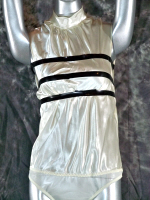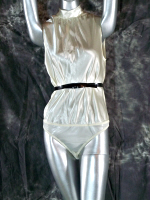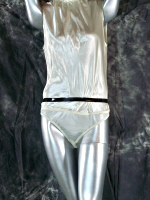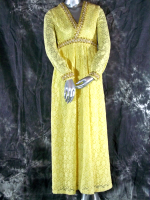|
Pattern Alterations – Creating That Perfect Fit!
Pattern alterations and pattern fitting go hand in hand. Pattern sizes are created based upon a standard set of body measurements, so generally once you know your body measurements, a pattern can be chosen from any of the pattern companies at the same size. These sizes are not the same as ready to wear sizes which are not consistent and often depend upon the manufacturer, which is why in general we can fit into a variety of sizes for ready to wear. For some great information to assist with pattern fitting, click here! For example, a size 10 for one manufacturer may be a size 12 for another manufacturer, so ready to wear sizes should not be used to determine what pattern size to buy. When creating that perfect garment that fits comfortably and looks good in the process, you have to start with the body measurements of the person that will wear the garment.
In my early years of sewing as a teenager, I found out the hard way, that my retail size did not translate to my pattern size. The retail size is generally smaller than the pattern size, so the pattern size for a misses/misses petites pattern would be a size 14 for someone with a size 36 inch bust. Once again I have to say, body measurements are very, very important! In other words if you use the retail size to select a pattern size, then the pattern size would be too small. Therefore, you must know what your body measurements are to select the correct pattern size, if you are normally a size 6, with a 36-37 inch bust and you go out and buy a size 6 pattern, then the pattern will be too small, since the pattern is based on a 30 ½ inch bust measurement. The correct pattern size would be size 14, which represents a size 36 inch bust measurement, and is considered a size medium pattern, what a difference! Once body measurements are accurately taken, then they can be compared to the standard pattern companies charts and patterns can be purchased from any of the pattern companies using the same size, but accurate body measurements are the key!
However, although you may now have the correct baseline size based upon bust measurements, the size for the hips, and waist may be different, which is why there is generally a range for each pattern size, to accommodate the difference in size of the waist and hips from the standard measurements. This is where pattern alterations and fitting comes in. The pattern may now have to be altered for any one body area or maybe all of them to obtain a more comfortable garment fit.
Of course, the garment should not fit like a glove; otherwise you won’t be able to move! There should be a balance between the wearer’s mobility in the garment and how the garment looks on the wearer or in other words, the garments appearance on the wearer. The wearer should be able to move in the garment, whether standing or sitting. There should be a wearing ease built into the garment modifications. Wearing ease is defined by Kenneth D. King, professor at the Fashion Institute, fashion designer and contributing editor of Threads Magazine, as the minimum amount of circumferences that is added to the garment to allow for movement, whether sitting or standing.
The wear eases that he recommends are:
Bust 3 ½ inches Waist 2 inches Half Hip 2 inches Full Hip 2 inches Arm Hole 1 ½ inches Bicep 1 ½ inches
How should body measurements be taken to obtain accurate measurements for pattern selection, pattern alterations and fitting?
Measurements should be taken at the bust, the waist and the hips for pattern selection. When pattern alterations and fitting begin, then measurements should include the entire torso (from the neck to the waist), the arms, bust, and the waist and hips.
The bust should be measured in three areas, the high bust which is under the arms, the full bust right across the area where the bust peaks, and the under bust.

The waist should be measured at the narrowest part of the waist or what is called the natural waistline.

The hips should be measured at the fullest part of the hips at the upper thighs.

For information about the actual process of cutting the pattern to produce the customized fit for the garment, click here on the link to Threads Magazine One of my most precious possessions is my prom dress which I wore to my 1972 High School prom. The dress is precious to me, because it was custom made by a seamstress that I knew. I chose the pattern, and the materials, and she measured me for a perfect fit. This was one of my first experiences with taking a store bought pattern and altering it to fit the wearer, me. The dress did indeed fit beautifully and demonstrated what can be done by skilled hands to alter a store bought pattern and make it fit an individual wearer.

Pattern alterations are not just done by professionals, there are training DVDs that actually teach pattern alterations. One that I have already mentioned is produced by Threads Magazine, click here to go to the sewing patterns page on this site under the heading Creating A Custom Fit By Altering Store Bought Patterns for more information about these DVDs.
Another DVD series that teaches pattern alterations can be found by clicking here on the link to Fashion Patterns.com With a little help just about anyone can learn pattern alterations to modify a store bought pattern for that perfect fit.
Clothing Alterations Page
|




